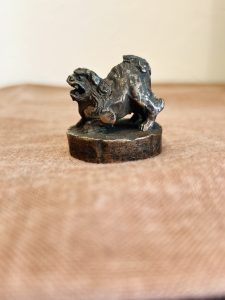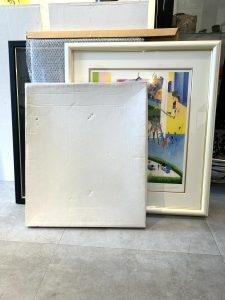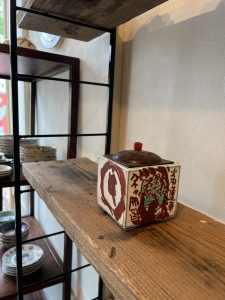皆さまこんにちは。スタッフHでございます。

いよいよ本日、20年ぶりとなる新紙幣が発行されますね。
新しい紙幣は本日から金融機関に引き渡され、順次、窓口やATMで手に入れることが可能だそうですが、初日は多くの金融機関が新紙幣の取り扱いを一部の店舗に限定するため、原則4日から新札に両替すると新紙幣を入手できるようです。
さて受け身で待つ私はいつ頃手にすることができるでしょうか。楽しみです。
何事も新しいものには何かしらの違和感を感じてしまうものですが、今回の新紙幣のデザインに関しても「重厚感に欠ける」などの否定的な意見も聞かれるそうです。
確かに初めて見た時は、海外のお札っぽい?という印象でした。アラビア数字による料金表示がかなり目立っております。
調べてみますと、偽造防止の強化に加えこれまでよりも実用性を重視したデザインだということです。
2025年には日本人の3人に1人が65歳以上となる超高齢社会を迎え、国際化も進んでいく中、新紙幣においてもユニバーサルデザインが強く意識されているようです。年齢や国籍、障害に関わらず誰もが能力を意識しないで使えるデザインとされています。
年齢を重ねると視力が下がる前に「コントラスト」の感度が下がるそうで、色の差がはっきりしていないと読み取りにくくなるとのこと。
また文字と文字の間が詰まっていると識別が難しくなるため、新紙幣では数字の間が広めになっています。こちらもユニバーサルデザインの書体となっているそうです。
現在は教科書などにもこのユニバーサルデザインの文字が使われているものが増えているとのこと。
ちなみに一万円札の「1」と千円札の「1」の書体が違いますが、この差も全体として見た時に違ってくるそうで、ユニバーサルデザインとは奥が深いのですね。
また指で触って識別できるように、11本の斜線がお札の種類ごとに、それぞれ違う場所に「識別マーク」として深凹版印刷でざらつきが作られています。旧紙幣では全種類のお札の同じ場所に違う記号が作られていましたがお札ごとに位置を変えることで更に識別しやすくなっているそうです。
しかし一方で伝統もしっかりと守られており、お札に使われる「紙」は国立印刷局で原材料から作られ、独特のしなやかな感触があり、水にも強く丈夫な和紙の原料である「みつまた」や「アバカ」などの植物から丁寧に作られています。
また国立印刷局には「工芸官」と呼ばれる専門の職員がおり、図柄を考える「デザイン」、原版を彫る「彫刻」、地紋や彩紋を担う「線画デザイン」、透かし担当の「すき入れ」の4部門で働いています。
デザイン担当の工芸官は何十年もの長い間修業をし、お札の元になる柄を描けるようになります。その絵をもとに彫刻担当の工芸官が特殊な彫刻刀で金属板に細かく刻み込みお札の原版を作ります。
工芸官が正確に何人いるのか、誰が何を担当しているかなどは極秘となっており、家族にも教えてはならないとか。
デジタル化が進んだ現代では高度な偽造防止技術も求められ、今回取り入れられた肖像が回転するように見える3Dホログラムの技術は銀行券への採用は世界初だということです。しばらくは物珍しくて遊んでしまいそうです。
ちなみに一万円札の肖像となっている渋沢栄一は全盛期とされる60代の姿になっていますが、肖像に向く60代の写真がなく、晩年の写真などを参考に想像して描かれているそうです。
すべての新札の肖像画は真似しようとすると違和感のある表情になるように描かれているとか。一体どういう技術なのでしょうか。
なにかと秘密が多い新札ですがいつか手元に来た時には隅から隅までじっくりと観察したいものです。
それでは、また次の機会に。
Hello everyone. This is Staff H.
Today is the first time in 20 years that new banknotes will be issued.
I heard that the new banknotes will be delivered to financial institutions from today, and you can get them at the counter or ATM sequentially. However, on the first day, many financial institutions will limit the handling of new banknotes to only some branches, so in principle, you can get new banknotes by exchanging them for new bills from the 4th.
So when will I be able to get my hands on them as I wait passively? I am looking forward to it.
I have heard some negative comments about the design of the new banknotes, such as “It lacks a sense of dignity.
When I saw it for the first time, I had an impression that it looked like a foreign bill. I was impressed by the design. The Arabic numerals used to indicate the price are quite conspicuous.
According to my research, the design is more practical than ever, in addition to strengthening anti-counterfeiting measures.
As we enter a super-aged society where one in three Japanese will be 65 years old or older by 2025, and as internationalization progresses, universal design seems to be a strong consideration in the new banknotes. The new banknotes are designed to be usable by anyone, regardless of age, nationality, or disability, without regard to their abilities.
It is said that as people age, their sensitivity to “contrast” decreases before their eyesight does, and it becomes difficult to read if the differences in color are not clear.
Also, since it is more difficult to distinguish between letters if the space between them is too tight, the new banknotes have wider spaces between numbers. This is also said to be a universal design typeface.
Currently, more and more textbooks and other materials are using this universal design typeface.
Incidentally, the typeface of “1” on the 10,000 yen bill is different from that on the 1,000 yen bill, but this difference also makes a difference when viewed as a whole, so universal design is a very profound concept.
In addition, 11 oblique lines are printed in different places on each type of bill as “identification marks” so that they can be identified by touching them with a finger, and they are made rough by deep intaglio printing. In the old banknotes, different symbols were made in the same place on all types of bills, but by changing the position of the symbols on each bill, it has become even easier to identify them.
The paper used for the bills is made from raw materials at the National Printing Bureau, and is carefully crafted from plants such as mitsumata and abaca, which are the raw materials for washi, a durable and water-resistant paper with a unique supple texture.
The National Printing Bureau has specialized staff called “crafts officers,” who work in four departments: design, engraving, line drawing design, and suki-iri, watermarking.
Craftsmen in charge of design are trained for decades to be able to draw the original pattern of the bill. The craftsmen in charge of engraving then use special engraving knives to engrave the design into the metal plate to create the original bill.
The exact number of craftsmen and who is in charge of what are top-secret, and even family members are not allowed to know.
In today’s digitalized world, advanced anti-counterfeiting technology is also required, and the 3D hologram technology that makes the portrait appear to rotate is said to be the first of its kind to be used on a banknote. I think I will be playing with it for a while because it is so rare.
The portrait of Shibusawa Eiichi on the 10,000 yen bill was drawn in his 60s, which is considered to be the prime of his life.
It is said that the portraits on all new bills are drawn in such a way that they look uncomfortable when you try to imitate them. What kind of technology is used?
There are many secrets about the new bills, but I would like to observe them carefully from corner to corner when they come in my possession someday.
See you next time.
*******************
ご実家の整理やお片付けなどをされている方のご相談などが多くございます。
お片付けなどくれぐれもご無理のないようになさってくださいませ。
風光舎では古美術品や骨董品の他にも絵画や宝石、趣味のお品など様々なジャンルのものを買受しております。
お片付けをされていて、こういうものでもいいのかしらと迷われているものでも、どうぞお気軽にご相談下さいませ。
また風光舎は、出張買取も強化しております。ご近所はもちろん、愛知県内、岐阜県、三重県その他の県へも出張いたします。
まずは、お電話お待ちしております。
愛知県名古屋市千種区姫池通
骨董 買取【古美術 風光舎 名古屋店】
TEL052(734)8444
10:00-18:00 OPEN





